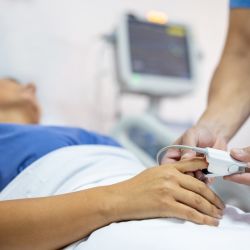Critically ill patients at a UK hospital have become the first in the
world to be fitted with a "revolutionary" bug-like device to detect
dangerous blood sugar levels.
Doctors at Southampton General
Hospital are using the hi-tech gadget, which consists of two probes with
four sensors that are hooked into the skin and covered with a dressing,
enabling them to offer patients round-the-clock protection against
life-threatening infections or seizures for the duration of their time
in intensive care.
Many seriously ill patients, including those with diabetes, suffer high levels of glucose in the blood as a result of the body's reaction to trauma or surgery and, as this increases the risk of infection, levels are usually lowered with infusions of insulin.
However,
as this treatment can force glucose levels to drop too low and cause
seizures or coma, patients require regular glucose monitoring.
In
the past, this was managed using traditional blood test analysis, which
would only take place every two to four hours - leaving patients
vulnerable if sugar levels increased or dropped without warning.
With
the new device, which is known as the Sentrino Continuous Glucose
Management System, patients' blood sugar levels are updated
minute-by-minute and displayed on a monitor at the bedside.
An
alert warning system is triggered to allow clinicians to intervene early
if a patient begins to head outside of their target glucose range and
prevent possible complications while, if their blood sugar alters
without warning, a separate alarm is activated to prompt urgent action.
Dr
Paul Diprose, a consultant cardiac anaesthetist, said: "This device is a
cutting-edge advance for critically ill patients as, for the first
time, we are able to constantly monitor the blood glucose levels in
critically ill patients.
"Until this development, we were reliant
on information taken and assessed every two to four hours. Many of our
patients have rapidly changing blood glucose levels and this device can
allow much more frequent feedback of levels and allow us to intervene
early to attempt to avoid complications."
The study was presented at a meeting of the Association of Cardiothoracic Anaesthetists in Cambridge.
Source: MSN news



























